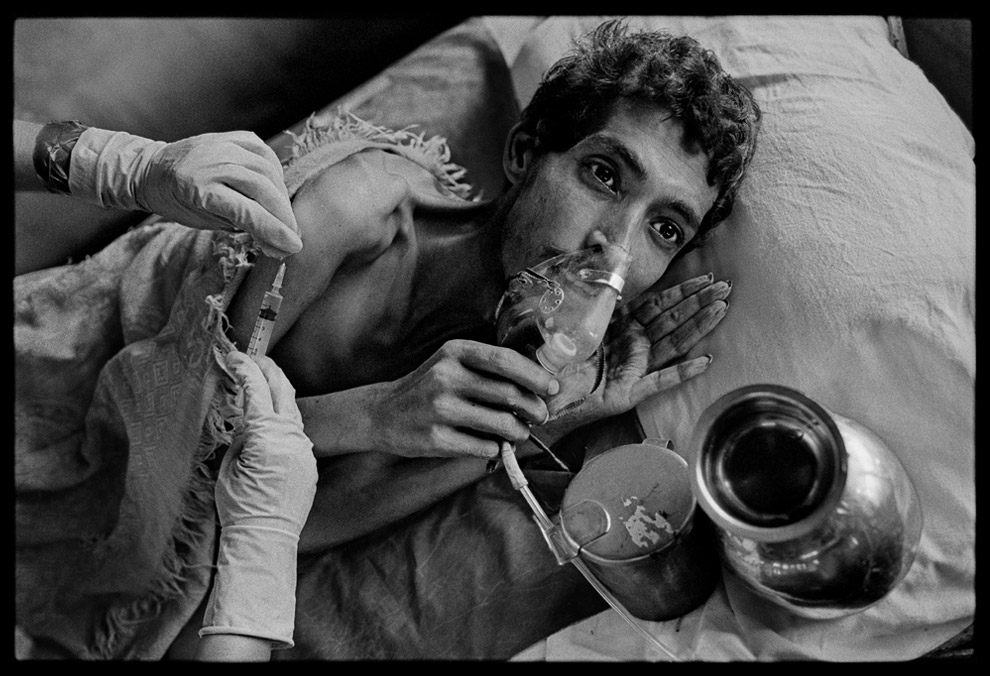By: Jie Wen Guan 10A
 |
| (Source: Nachtwey's Wish: Awareness of XDR-TB) |
In the book called Mountains beyond Mountains by
Tracy Kidder, tuberculosis killed more adults than any other disease.
The main reason was because it is not easily treated or cured especially
for someone with HIV. The diagnosis for TB can be tricky for someone
with HIV. Nearly 25% of Haitians died before they reach 40. Farmer, who
was a doctor who studied at Harvard medical school tries to find ways
to help prevent or cure TB. In the book, Kidder states, “Improperly
treated, or not treated at all, TB is dreadful and lethal, usually
devouring the lungs but also sometimes other organs, and sometimes the
bones”(Kidder, 126). In most cases, TB most commonly affects the lungs
but if TB is improperly treated or not treated, it can affect other
parts of the body. It can harm other organs such as the bone. Besides
this, Kidder also indicates, “In poor countries, TB was the most common
proximate cause of death among people who died with AIDs” (Kidder, 126).
Among people who died with AIDs, TB was one of the leading cause of
death in poor countries. Farmer spent most of his time in Haiti and in
one of his latest book called Infections and Inequalities, it illustrates the connection between poverty and disease.
Tuberculosis is mainly caused by a bacillus called Mycobacterium tuberculosis and
can spread from one person to the next through air. As stated before,
tuberculosis usually affects the lungs but can also affect other parts
of the body such as the brain and kidney. The highest rate of TB were
found in the poorest countries. Poverty that resulted in poor hygiene
habits and overcrowded conditions is more likely to increase the chance
to develop TB. Again, TB killed about 1.4 million people annually and we
need to stop TB from spreading in the future especially in Haiti. (The
Miami Herald, Fighting Tuberculosis). There is no medication that can fully heal TB at this moment, but we can find ways to reduce the rate of getting
affected by this disease. Curing the disease is important, but
preventing the disease is even more important.
 |
| (Source: WPA Tuberculosis poster.jpg) |
- Doing a fundraising event to fundraise money for them.
- raising awareness of raising money.
- Donating food and clothing for people who needs them like homeless people or people infected with TB.
- Donating money to Haiti to help them out and make the hospital cleaner.
It is very difficult for a person to accept that they are going to die
and will never see their family again. It makes people want to give up
on living. What we can do about this is to encourage the people with TB
to think positive and to never give up on living because there is a lot
of people in the world that would support them.
This op-ed is very powerful and moving. Your first image really hooked me in, and after reading it, this op-ed made me feel completely differently about the problem in Haiti. This op-ed stands out, because it demands respect in a way.
ReplyDeleteThis Op-ed is very good. I like how you used fact and quotes to strengthen your argument.
ReplyDeleteThe statistics in the first paragraph is a good way to start spread awareness because it is the first thing that a person would see as they read through it. It caught my attention and made me feel sorry for those in poverty that are in risk of being infected. You taught me that education can be a solution to this problem because the more people know about it than the more people will be aware of how to stay away from it.
ReplyDeleteYou had really great logos! I can see clearly what I can do to help out and the pathos and ethos made the readers see and feel what your thoughts exactly were.
ReplyDeleteThe facts you used really backed up your argument, in "Half the Sky" it goes more in depth about AIDS which is something you discussed. It was really interesting to read about other life threatening diseases in poor countries to get a bigger picture of their hardships. I agree it is very important to have proper treatment, because with out it usually fatal. The media needs to definitely shine a light on these disastrous circumstances.
ReplyDelete